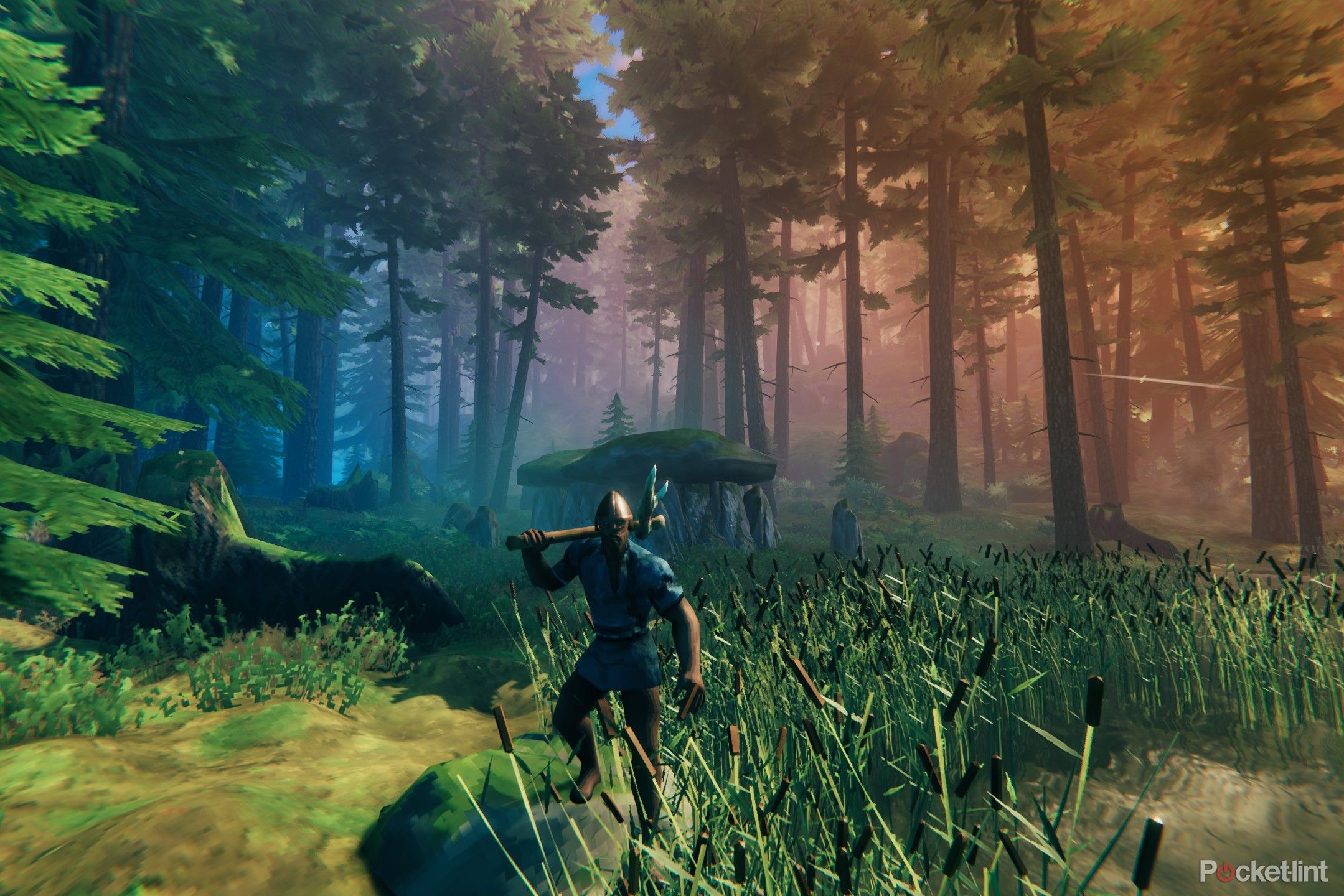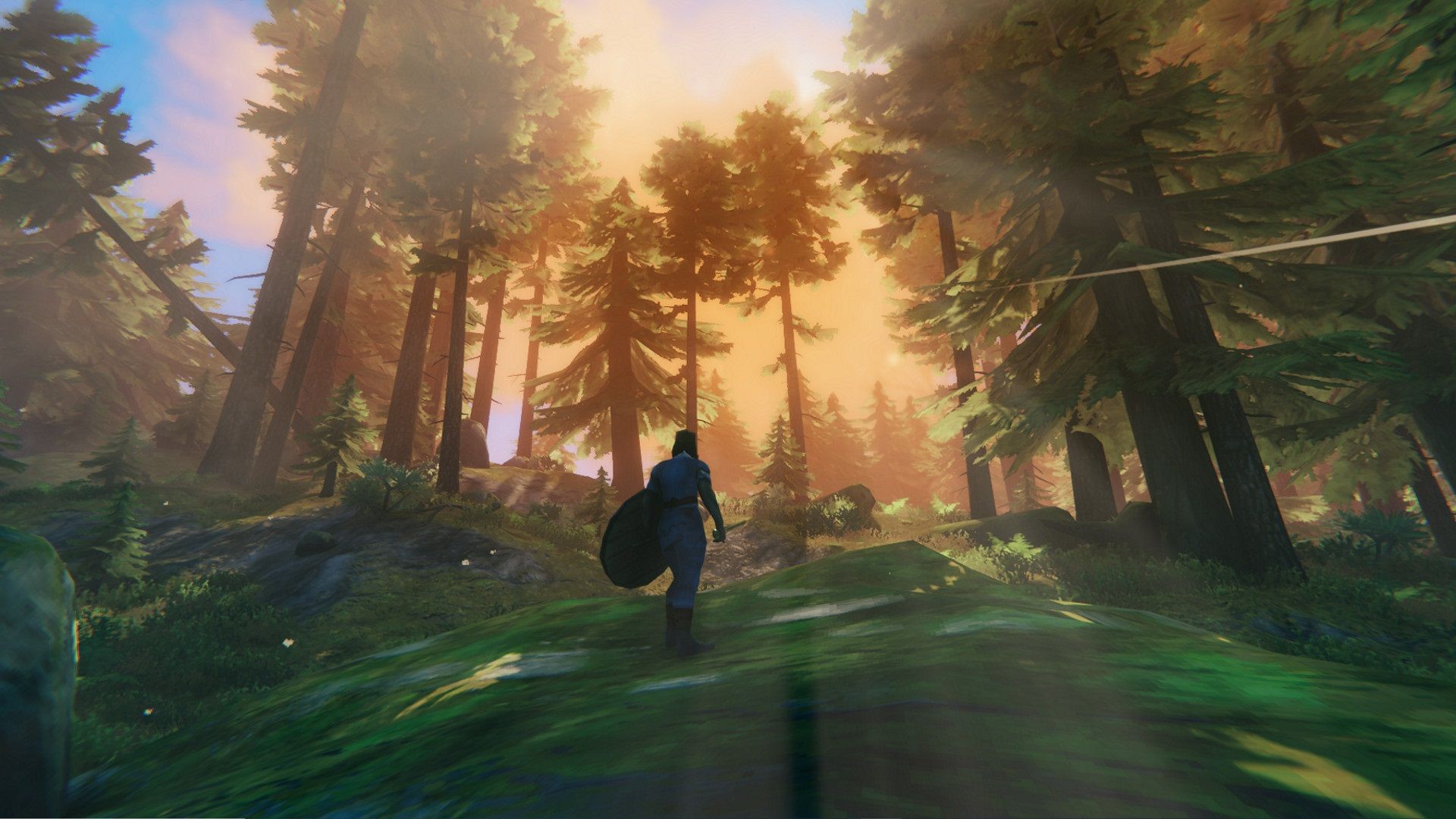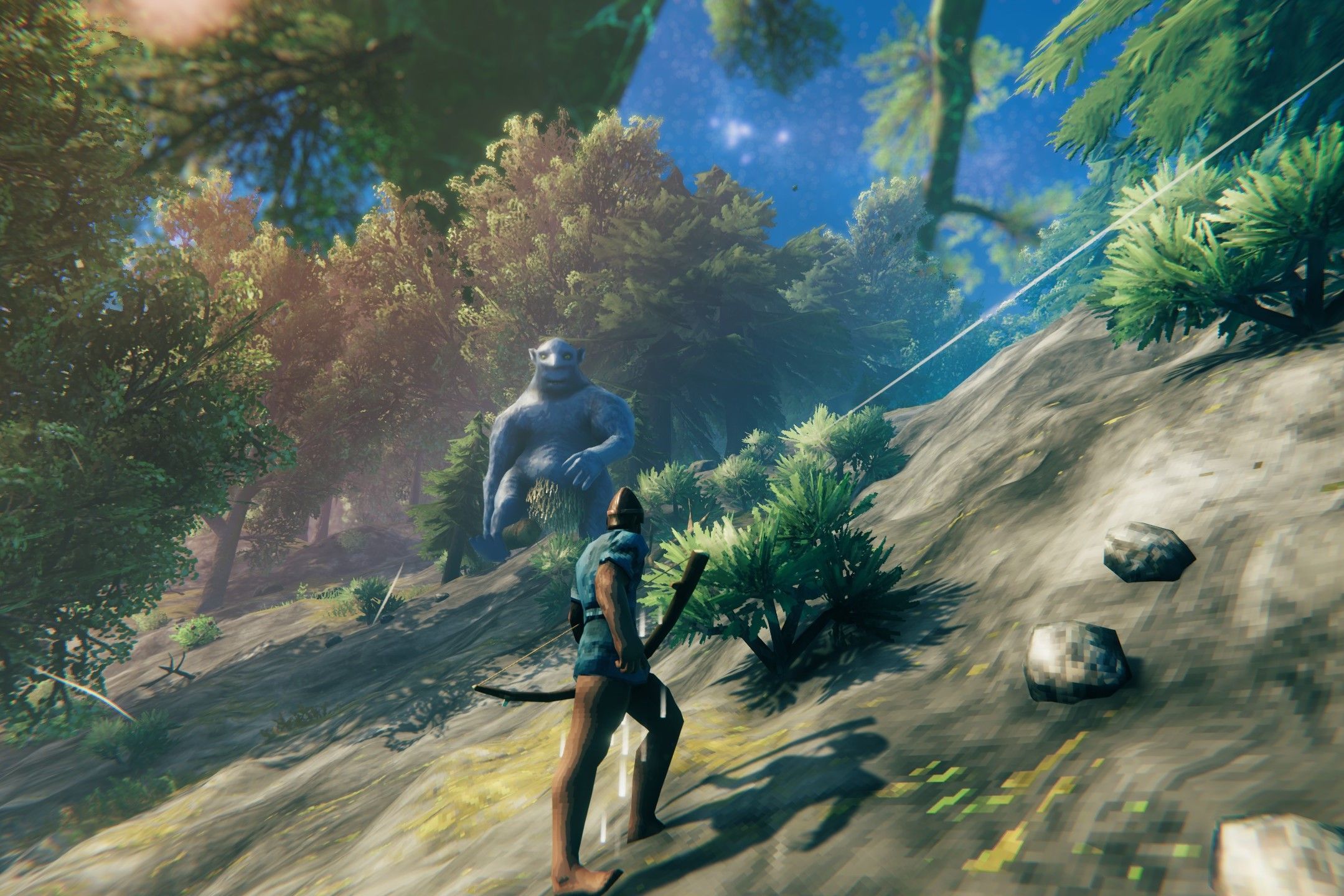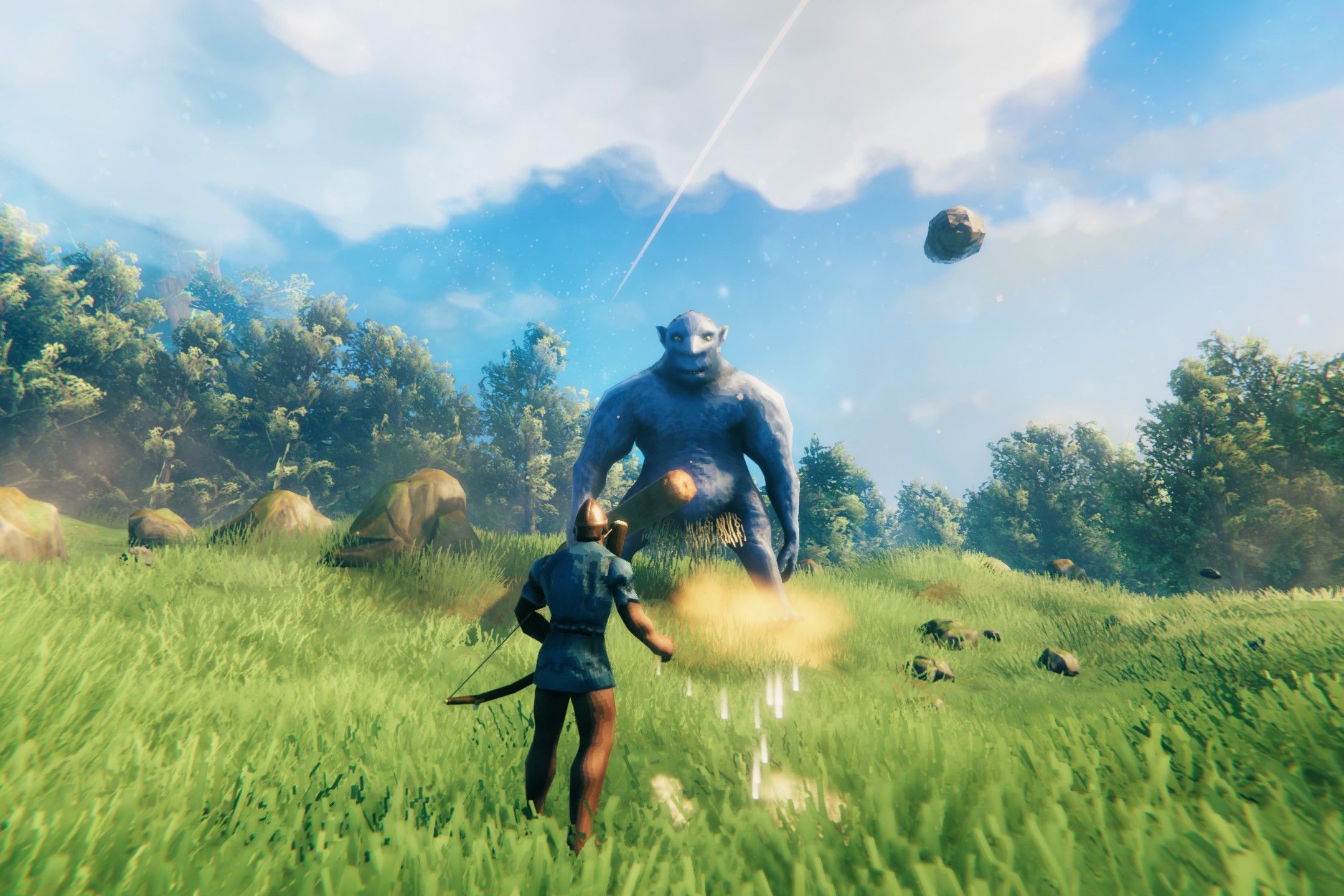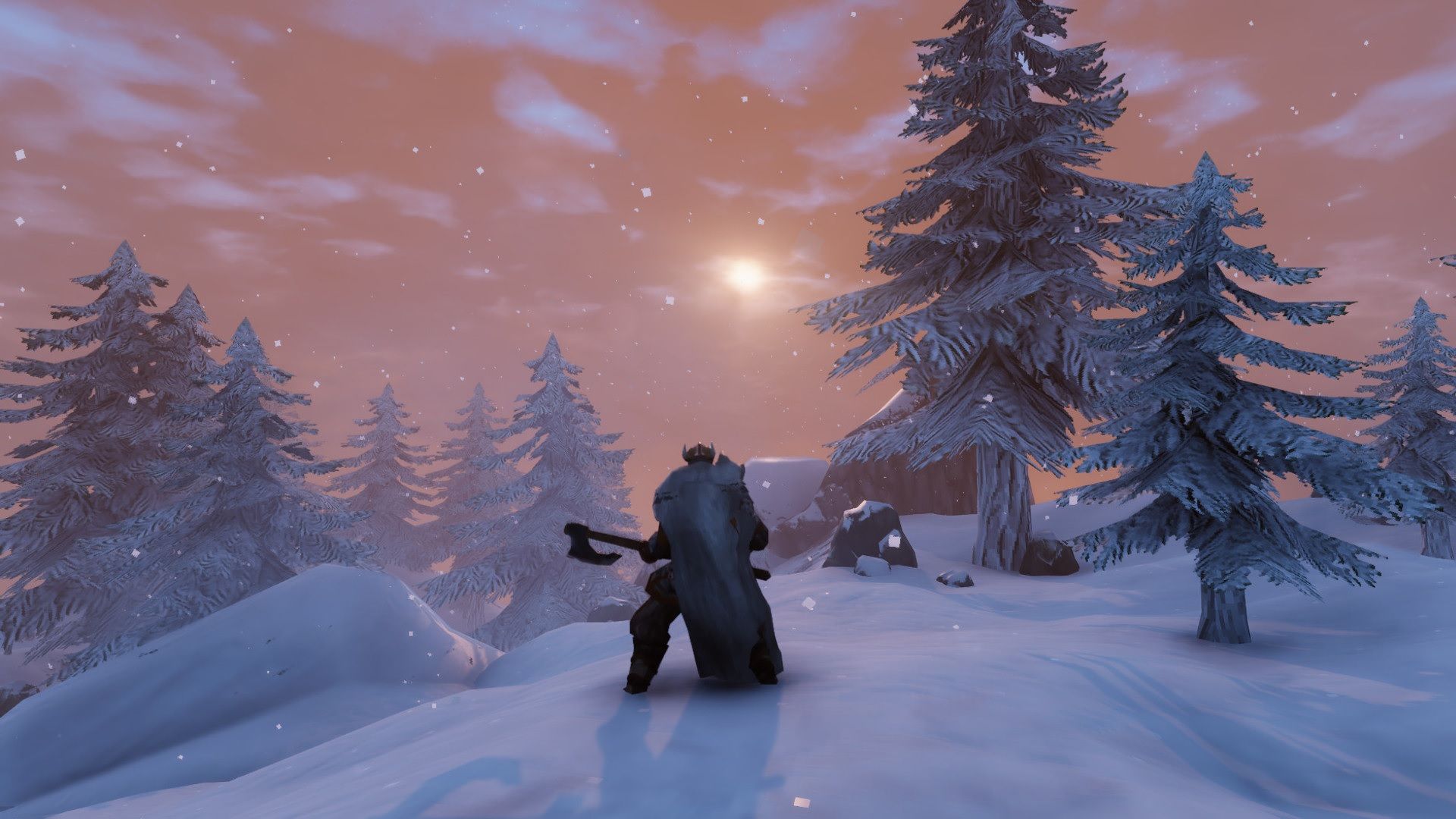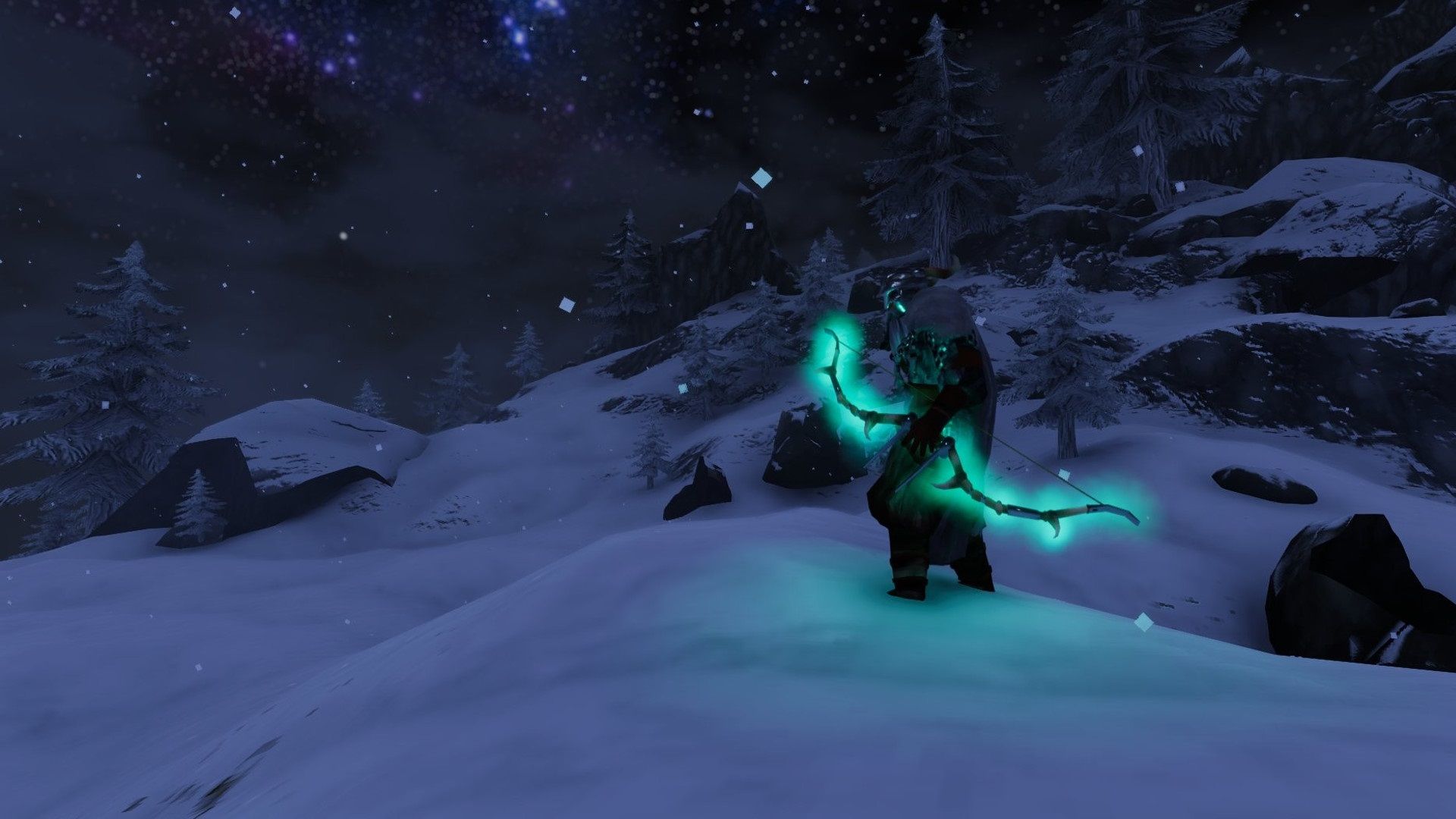Valheim is taking the PC gaming world by storm. It's been topping the Steam popular games charts for a while. In fact, so much so that it's already surpassed player numbers of Rust and has reached over 364,629 concurrent players within just two weeks of launching.
Valheim is on track to be a virtual success, so we're exploring whether it's worth a buy and what it's all about.
Valheim is an early access, indie survival game that's inspired by Viking culture. It's an open-world survival and crafting game with both single-player and co-op PvE (player vs environment) mechanics. It also has a punishing combat system, boss battles and a neat building system that even lets you craft imposing Viking warships.
This mostly sounds pretty standard for survival games out there. But Valheim is interesting for a number of reasons, not least of which is the huge procedurally-generated world you're free to explore. There's also the ability to play with a group of up to 10 people and minimum system requirements that include just 4GB of RAM, a GeForce GTX 500 GPU and 1GB of storage space.
- Upcoming PC games: The best new games to look forward to
- Best PC games to buy: Fantastic games to add to your collection
Procedurally generated adventures in purgatory
Playing Valheim, you're thrust into a huge procedurally generated world that's inspired by Norse mythology and is essentially Viking purgatory.
Your mission is to find and kill Odin's enemies and bring order to the realm of Velheim. In order to do so, you'll need to explore, build, upgrade and battle your way through a challenging environment fraught with danger.
The highlight here is, of course, that because it's procedurally generated, no two player's experience will be the same. Unless you're playing with friends. Yet, the further you travel out into the world, the more challenging the environment becomes. At the same time though, the rewards are riper the further you go as well.
Eventually, with enough resource gathering, you're able to build a Viking longship to ferry across the waters and explore further. Just beware of various sea creatures lurking under the surface. You can also build strongholds and outposts as you travel as well as portals for fast travel to make things easier.
We enjoy Valheim not just because of the potential fun to be had, but also for the chilled out low-fi sound track and the understated, yet pleasing visuals. This title is not graphically intense, nor is it going to be punishing your graphics card, but that's not what it's about.
A forgiving start?
Survival games are generally punishing. That's the nature of the beast and part of the fun. But Valheim works well because it eases players into the world with an accessible design that includes simple tutorials to get you started. It also nicely teaches you the basics of the gameplay including farming, crafting, combat and more.
Each time you need to know something, a raven flies in to give you a nugget of information or a helpful hint on what you need to know.
You'll also find rune stones around the world that you can read for other hints. We found one, for example, which warned about the dangers of boars and how they could be warned off with fire - which would have been nice to know before we'd been killed by them multiple times while minding our own business punching trees.
We've said it's forgiving, but that doesn't mean it's easy to survive. We died roughly 10 times in the first 20 minutes of playing. We died while punching boars. We died when fighting goblins. We died failing to dodge more boars. We drowned when we ran out of stamina while swimming. We even nearly died when we accidentally caught fire when trying to cook some food. We also died when a felled tree dropped the wrong way.
The good news is, when you die your gear drops with a nice tombstone and when you respawn you can simply return to it (assuming the danger has passed) and collect it.
Valheim tips and tricks
If we've piqued your interest and you're keen to get started in Valheim, then follow the rest of this article for some tips and tricks to help you get started.
Punch things
When you start out, you'll have no gear but don't fret as you can fairly easily gather things in order to start crafting. Punching is simple enough to get you started. Punching is not just effective against minor enemies you'll encounter at first, you can also use it to punch trees. Find small thin trees and give them a bash and they'll soon fall down and you can take the wood and craft a club. That can then be used for more effective bashing.
Watch out for fallen branches on the ground too. You'll find already broken trees and branches that you can just grab for wood without needing to bash or chop anything which is ideal.
Talk to Ravens
Every now and then you'll find ravens landing next to you. Talk to them and they'll give you useful tips on how to advance in the game or how to survive.
Head for water
Though you don't want to stray too far from the start point until you've got some good gear it's worth looking for water as soon as you can. At the water's edge you'll find lumps of flint often scattered around the edges of the shore. Flint is easy to find and you don't need to punch anything. Just look out for smallish, smooth off-white rocks on the ground and grab them when you can. Flint can then be used to craft a flint axe which is great for chopping down bigger trees. It's also useful for crafting arrows, speaks, and more.
Wave your torch at boars
As we mentioned earlier, boars are a good source of food, but they're also a real pain. Punching them works but they take a few hits in order to kill. Weapons are more effective, but we've actually found that using a flaming torch is particularly useful as they don't like it when you wave it at them.
Destroy old shacks
As you explore, you'll find old, disused and unoccupied shacks around the map. These can either be used to setup a temporary shelter or they can be destroyed and harvested for their parts. Once you've crafted a hammer, you can simply middle click your mouse when holding the hammer to knock it down bit by bit. Doing that you'll gather the resources from it and then you can use it for your own building efforts. You'll need a workbench nearby, but you can destroy that once you've finished as well.
Even if you're not knocking these buildings down and instead are using them as shelter, be sure to poke around inside as some have treasure chests with useful loot.
Careful tree felling
We've already mentioned that you can be killed by falling trees, but if you're clever you can also use a falling tree to knock down other trees. Watch as a tree falls and you'll see how it's falling, getting them to fall in the right direction can result in other trees being knocked down with a domino effect. This is a much more efficient way of harvesting trees.
Taming boars
As well as scaring boars off, it's also possible to tame them. You can do so be feeding them mushrooms that you find in the world. If you can pull it off by getting them to chase you into a pen or something else you've built and then shutting them in, you can then feed them treats and win their love.
Tamed boars will then provide easy leather scraps when you need them.
Watch the wind
If you've been hunting boar or deer then you've probably noticed it's fairly easy to spook them. Not just if you charge up to them swinging an axe but even if you're sneaking. That's because the game is clever enough to give away your position based on wind direction.
On the minimap, you'll see an arrow. That arrow shows the current wind direction and you'll also see white streaks in the air which show which way it's blowing. If you're in a position where the wind is blowing toward the creature you're hunting, they might smell you. Keep that in mind when sneaking.
Backstab!
Sneaking is great (once you get the hang of stamina use). Sneaking up on an enemy also allows you to backstab and do more damage. If you have a flint knife this can do a great amount of damage with a sneaky backstab. Make the most of those bonuses!
Take better screenshots
We said earlier that this game is hardly the best looking one we've ever seen, but that doesn't mean you can't get good screenshots.
Max out the graphics, then hit CTRL+F3 to hide the heads up display and focus on the world around you., Then you can snap away until your heart is content. Alterantively it's a good way to make the gave even more hardcore as you won't know what's in your inventory. Press CTRL+F3 to bring it back again.
Repair your gear (for free)
Like every survival game, Valheim has an element of weapon and tool degradation over time and use. Once you have a workbench though, you can repair your gear. Open the workbench menu and you'll see options to craft and upgrade. On the left, you'll also see a hammer. Click that and you can cycle through your inventory repairing the various things. The best thing is, this costs no resources.
Vary your food
Unlike other survival games, it's not possible to just eat loads and loads of the same food and replenish your health. You're actually limited to how much you can eat of each type before they stop being useful.
A collection of raspberries, for example, will only allow you to eat a few before you can't eat anymore. But if you then have some cooked meat as well, then you can use that as well. So it pays to have a variety of foodstuffs in your inventory.
The health rewards from food also varies. For example you get more of a health boost from cooked meats than you do from eating just mushrooms and berries. Which means more overall HP and less danger of dying. Cooking meat is a pain as you need to carefully monitor it to make sure it doesn't burn and become charcoal, but it's worthwhile!
Don't run everywhere
Stamina is a serious consideration. You use stamina from running, swimming and fighting. So if you spend all your time charging around the map you'll soon find you're in a position where you can't defend yourself. Similarly, if your stamina is low you will drown if you swim for too long. We died this way when we swam out too far on the hunt for flint and stones. Watch your stamina bar.
Pick your fights
Stamina is also a problem if you get into battles. You can't run into a group of enemies on your own and home to survive as you'll run low on stamina and will soon meet a grizzly end.
Share your location
When playing with friends, it's useful if everyone knows where you are. Click M to open the map and on the bottom right corner of the map interface you'll find a tick box that says "visible to other players". Clicking that makes it so you can be seen on the minimap and main map. If everyone does that then you can easily find each other if you need help.
Also if you open the map you can middle-click your mouse button you'll ping a location
Mark spots
Open your map and you'll find on the right there are various marker. Click these and then click on the map and you can not only drop a marker but you can also label it. This can be really useful if you've come across a point of interest and need to remember where it is in future.
Whether that's an entrance to a crypt or a large copper deposit, it can be handy to map the world out in this way rather than trying to guess where things are. Especially if you come across such things when your inventory is already full.
Acquire a pickaxe
Many things can be crafted early on, but in order to mine some resources you need a pickaxe. And in order to get a pickaxe you'll need to defeat the first boss. Once you have beaten Eikthyr you'll have access to a blueprint for the Antler pickaxe, which in turn can be used to acquire stone and ore.
Mine iron, copper and tin
Once you have the pickaxe, you'll need to explore further afield in order to find copper and tin. Copper can be found in mounds in the Dark Forest, while tin appears along the coast within stones that have black streaks on them.
Iron can be a bit harder to find but it can be mined in the Sunken Crypts in the Swamp biome, as veins in the Snowy Mountains or around the surface of the Swamp.
Find a fishing rod
Sadly a fishing rod isn't something you can craft yourself. You need to find a trader to acquire one. Traders randomly spawn in the Black Forest. But because of the procedurally generated nature of the game we can't tell you where. It is worth knowing that the forest is dangerous though, so don't go there immediately. A fishing rod is obviously a useful thing to have though.
Building a home
A good tip for building your own home or a permanent structure is to use vertical poles to build the foundations. It's not possible to clear the ground to make a flat building surface at this point, but you can use the small vertical poles to make a small foundation and raise your home neatly off the ground.
Then just build walls, a door and a roof. You can build a bed then but it's worth knowing that there's no issue with not sleeping as enemies don't appear to be more aggressive at night.
Build temporary outposts
When you venture out further into the world you'll find it soon becomes a real pain if you wander for ages, collecting loot only to die and have to trek all the way over again to get your gear. Build a small hut and a bed when you're in a new region and you can at least use that as a temporary spawn point if things go wrong.
Craft a bow
The bow is an important piece of gear for fights and hunting. Craft it as soon as you can. In order to do so you'll need a workbench and 10 pieces of wood and eight leather scraps. So be sure to murder plenty of boars and chop down loads of trees too.
Once you have the bow you can then pull off some nifty ranged combat and also hunt deer. But watch for the drop from the arrows - aim high as there's a severe drop.
When hunting deer it pays to sneak. If you press control you'll assume a sneaky stance and will be less visible. In this mode, you'll be able to get closer to deer without spooking them. But pay attention to your stamina though, as moving while sneaking will still drain that bar. If you stop moving for a bit it will also regenerate though.
How to plant seeds
Hunting and foraging for food is easy enough when you first start out, but when you can you'll want to plant seeds grow your own food. In order to do this you'll first need a smelter. The smelter is used to craft other things but it can be tricky to build. To do so you'll need 20 stones and five sutling cores.
Stone is easy to find but the cores are trickier as they can only be found in the Black Forest which is dangerous. When you're in the forest, look out for tunnels that take you underground. Down there you should find what you're looking for, then you can craft a smelter from the workbench.
Use the smelter to craft bronze from a mix of copper and tin and you can then create a cultivator. That tool is basically like the hammer - in that it has a similar building logic but allows you to cultivate the land and make it farmable. then you can plant seeds in that area and reap what you sow.
Separating your inventory
As with any survival RPG, when you gather loot it stacks up in your inventory. If you're playing with friends it pays to share your loot, you can obviously deposit some in a storage chest, but if you need to hold onto some then it helps if you can separate them out.
Raspberries, for example, are rife, but you don't need 50 of them all to yourself at all times. Press shift and click your mouse and you'll be able to choose a specific number of them to deposit or collect from storage. This makes sharing easier.
Pick things up to learn
You can learn how to craft things by simply picking items up. We smashed up an abandoned Viking boat and grabbed the parts and doing so we learnt how to craft fine wood.
You can use this logic to help your friends and vice versa as well. Drop an item they don't have and if they pick it up they'll then learn how to craft it.
Weapons for the right occasion
Different weapons are more effective against different enemies. Clubs, for example, are useful against skeletons, while an axe is good against graylings.
It's also possible to equip two items at once - a shield and an axe or a torch and a knife for example. Simply press the corresponding number button to equip both.

